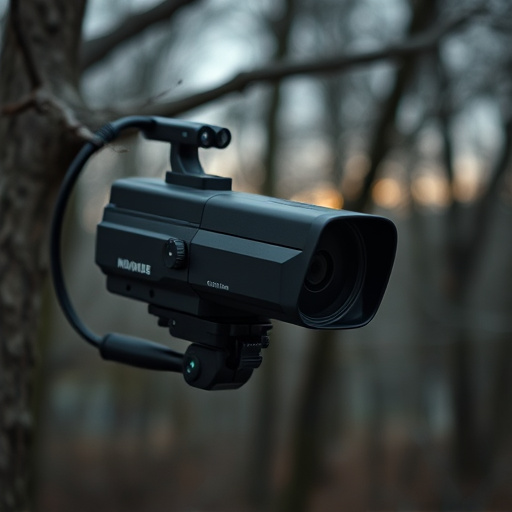Battery-powered wireless spy cameras, driven by rechargeable batteries and using RF signals for transmission, offer discreet surveillance. Their growing popularity necessitates advanced detection methods like EMF detectors, thermal imaging, and RF signal analyzers. Understanding their frequency operations and employing specialized equipment is crucial for identification. Safety and legal considerations are paramount when dealing with suspected spy cameras; always consult local laws regarding privacy and surveillance.
Uncover the insidious world of hidden surveillance with our comprehensive guide on detecting battery-powered wireless spy cameras. In an era where privacy is paramount, understanding how these tiny yet powerful devices operate is crucial. This article delves into the intricacies of battery-powered wireless spy cameras, providing a detailed overview and practical tools for detection. From identifying unique radio frequency signals to navigating legal considerations, arm yourself with knowledge to protect your personal spaces from covert recording devices.
- Understanding Battery-Powered Wireless Spy Cameras: A Comprehensive Overview
- Detection Methods: Tools and Techniques for Uncovering Hidden Cameras
- Identifying Radio Frequency Signals: A Step-by-Step Guide
- Safety Precautions and Legal Considerations When Detecting Hidden Cameras
Understanding Battery-Powered Wireless Spy Cameras: A Comprehensive Overview
Battery-powered wireless spy cameras have emerged as a sophisticated and increasingly common tool in the realm of surveillance. These devices operate independently, drawing power from small rechargeable batteries, allowing them to be strategically placed in hidden locations without requiring an external power source. Their wireless nature enables remote access via smartphone apps or computers, making it possible to monitor activities discreetly. This technology has revolutionized privacy and security, offering a level of flexibility and convenience previously unattainable with wired camera systems.
Understanding how these devices work is essential for anyone looking to protect their personal or professional spaces. These spy cameras typically employ radio frequency (RF) signals to transmit video feeds, making them capable of operating within a certain range without the need for complex wiring. The compact size and low-profile design of battery-powered wireless spy cameras make them nearly invisible, ensuring they can capture footage without raising suspicion. This comprehensive overview aims to equip readers with the knowledge to detect such hidden devices and take appropriate measures to safeguard their privacy.
Detection Methods: Tools and Techniques for Uncovering Hidden Cameras
Detection Methods: Tools and Techniques for Uncovering Hidden Cameras
In today’s digital era, battery-powered wireless spy cameras have become increasingly sophisticated, making them harder to detect. However, a range of tools and techniques can help uncover these hidden devices. One common approach involves using EMF (Electromagnetic Field) detectors, which can pick up signals from the camera’s transmitter. These detectors emit visual or audible alerts when they come across unusual electromagnetic radiation, potentially indicating the presence of a hidden camera.
Additionally, thermal imaging cameras are effective in detecting heat signatures emitted by electronic devices. Since wireless spy cameras often have built-in LEDs for night vision, they can leave distinct thermal traces that stand out against their surroundings. Another method includes utilizing radio frequency (RF) signal analyzers, which can scan and identify specific frequencies associated with hidden camera transmissions. This allows experts to pinpoint the location of the device and gather evidence of its operation.
Identifying Radio Frequency Signals: A Step-by-Step Guide
Identifying hidden cameras, especially battery-powered wireless spy cameras, relies on detecting their unique radio frequency (RF) signals. Here’s a step-by-step guide to help you in this process:
1. Understand the Technology: Battery-powered wireless spy cameras transmit data via RF signals for remote control and video streaming. These signals can be detected using specialized equipment that captures and analyzes wireless frequencies.
2. Acquire Suitable Equipment: Invest in a high-quality RF detector or a signal analyzer designed to pick up low-power radio transmissions. Some devices are specifically built for detecting hidden cameras, making them ideal for this task. Calibrate the equipment according to the frequency ranges commonly used by spy cameras (often between 2.4 GHz and 5.8 GHz).
Safety Precautions and Legal Considerations When Detecting Hidden Cameras
When detecting hidden cameras, especially battery-powered wireless spy cameras, it’s crucial to prioritize safety and adhere to legal boundaries. Always approach this process with caution to avoid any potential harm or legal repercussions. Never attempt to handle or destroy a suspected camera without proper knowledge and equipment, as this could lead to injury or create evidence issues. Ensure you have a clear understanding of the laws in your area regarding surveillance and privacy rights.
Legal considerations are essential, especially when dealing with hidden cameras. Unauthorized installation of such devices is often illegal, and identifying them requires a balanced approach. Respecting personal privacy and property boundaries is paramount. Using detection methods and tools designed for this purpose can help ensure you’re within the legal framework while trying to identify and disable battery-powered wireless spy cameras.
In today’s digital era, understanding how to detect hidden battery-powered wireless spy cameras is an essential skill for privacy awareness. This article has equipped readers with a comprehensive guide, covering from recognizing these devices’ unique characteristics to employing effective detection methods and tools. By learning to identify radio frequency signals and adhering to legal considerations, individuals can protect their privacy and personal spaces. Stay vigilant, stay informed, and take control of your digital environment.
